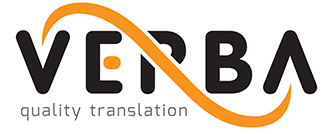Obratite nam se: +385 1 4576 194, info@verba.hr
Bridge Language

What is a bridge language, and when should it be used?
Language is the foundation of communication because it allows people to communicate their thoughts, ideas, and emotions to others. On the other hand, when people from different linguistic backgrounds come together for job, travel, and education, language barriers can be a major challenge in today’s globalized world. Translation service providers can assist with this. They are essential in facilitating successful communication across linguistic and cultural barriers, helping businesses to increase their market reach and engage with new customers. The need for language services also rises as the globe becomes more connected, highlighting the crucial role of LSPs in promoting cross-cultural understanding and communication.
And what if no suitable translator exists for a specific language combination?
One of the most frequent challenges faced by language service providers is locating a qualified translator for a particular language pair. In certain situations, it is occasionally necessary to use the so-called bridge language (relay) to guarantee successful communication. English is commonly utilized as a bridge language due to its widespread usage and acceptance as a global language. The experience has shown that the best translations are created when the translator is a native speaker of the target language. However, for certain language combinations and types of translation projects, a native speaker of the target language with adequate knowledge of the source language can be unavailable. A language service provider might use English as a bridge to translate the content from Croatian to English and then from English to Japanese, for instance, if a client needs a translation from Croatian to Japanese but there isn’t a professional translator available for the language pair.
Using English as a bridge language in translation services is a common practice because of its status as a global language. With over 1.5 billion speakers, English is the most commonly used language in the world.
Challenges imposed by the use of the bridge language
While using a bridge language in translation services can be effective in facilitating communication and providing high-quality translations, there are also some associated challenges. One of the primary challenges is that the quality of the translation may be impacted. When using a bridge language, there is an increased risk of mistakes, misinterpretations, and nuances being lost in translation. Moreover, using a bridge language can also lead to increased translation costs, as the translation process may take longer and involve more translation professionals due to the additional step of translating the content twice.
Another challenge is the potential for linguistic and cultural bias. English has evolved over centuries and has been influenced by various cultures and languages. As a result, translations that rely on English as a bridge may contain cultural or linguistic biases that may be difficult to detect.
In general, using a bridge language in translation services is a common practice when no appropriate professional translator is available for a specific language combination. While English is the most used bridge language, other languages, such as German, French, and Spanish, are also used in this setting. However, it is crucial to be aware of the challenge and take steps to ensure that the quality of the translation is maintained. To ensure that the translation satisfies all project requirements and serves its intended purpose, translation service providers need to have in place a well-designed quality assurance system.
